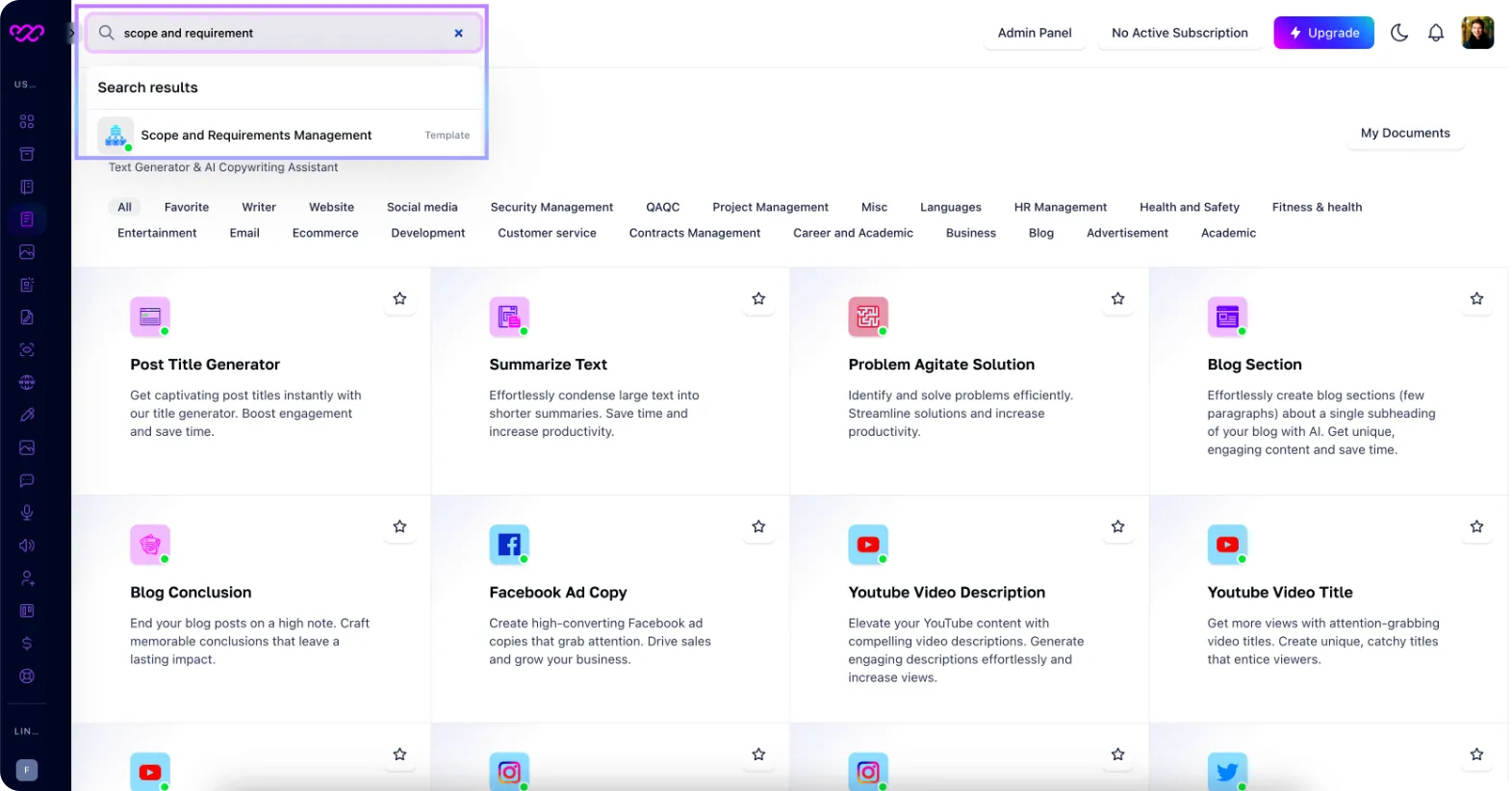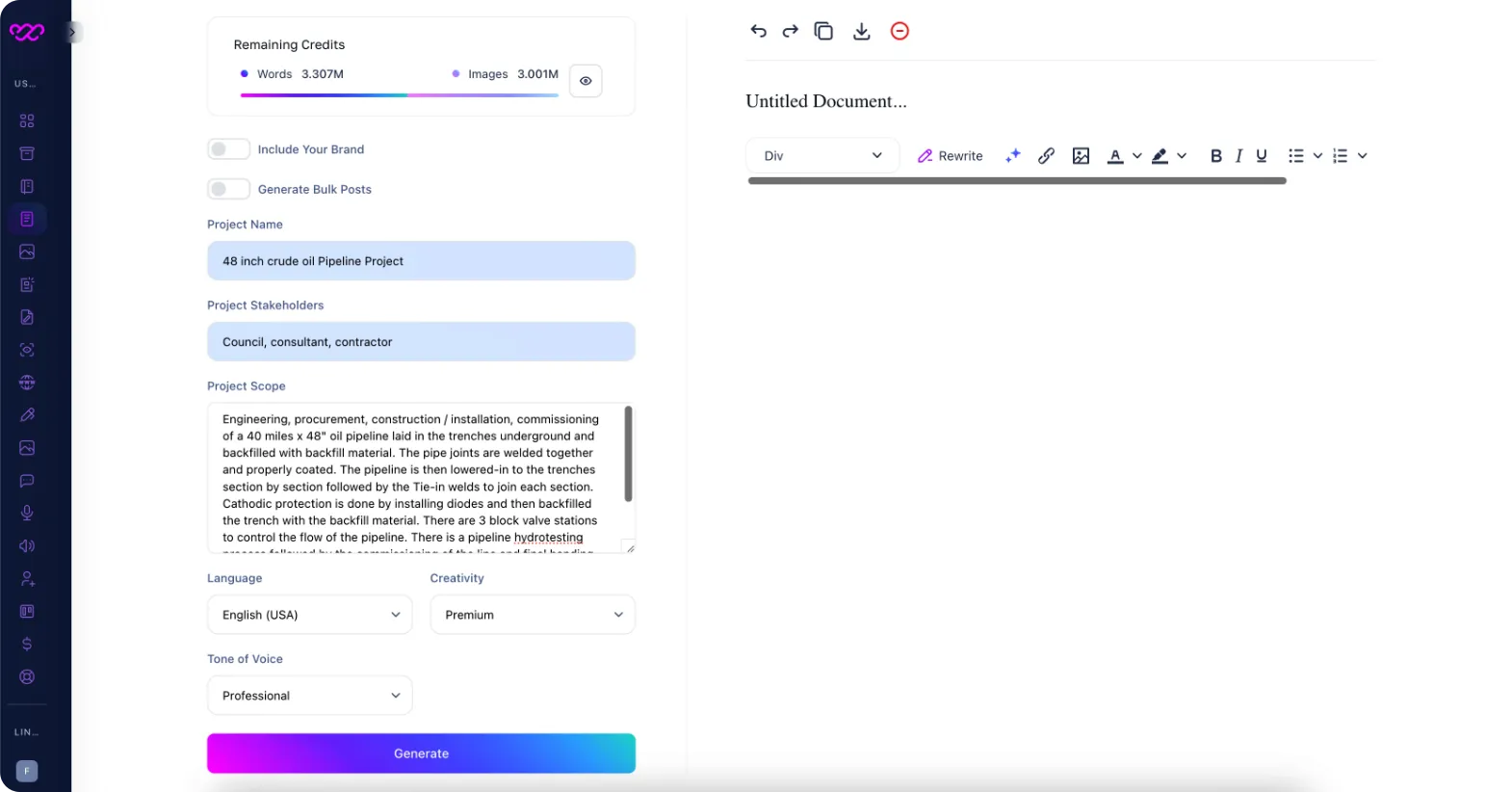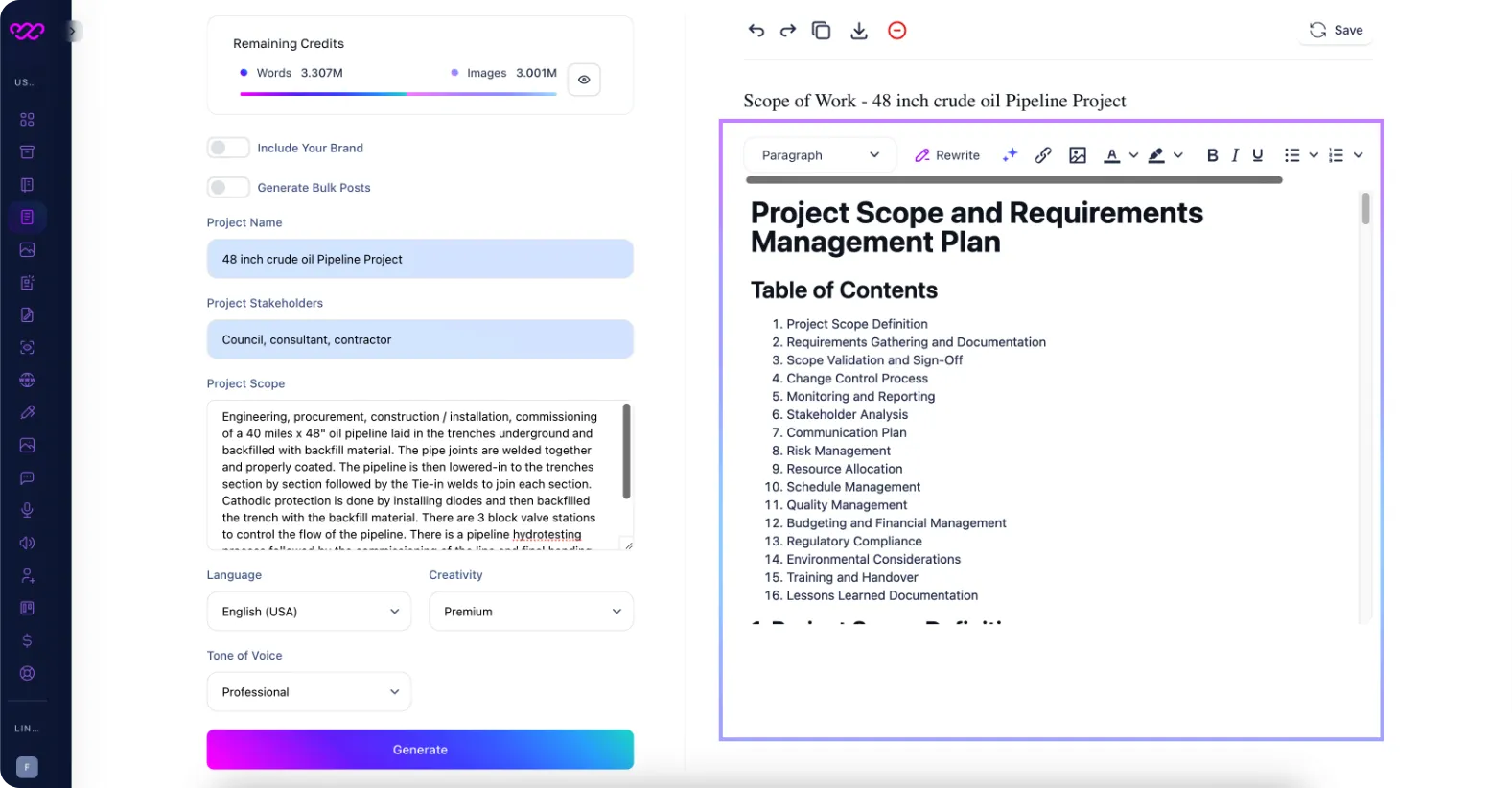Create Scope and Requirements Management Document in 3 Steps

Having a Scope and requirements management is one of the vital keys to successful project management. By knowing the boundaries and deliverables of a project, you can make it sure that everyone who’s on the list—stakeholders and members of the project team—are aligned with each other as far as what’s required. This step-by-step process will guide you through the process of developing a bulletproof plan that protects your project from threats of scope creep and miscommunication.
A lot of professionals underappreciate the value of a clearly defined scope, and it costs them dearly in terms of project delay and cost overruns. With the times running fast, it is more important now than ever to have a methodical approach to scope management.
Effective scope management practices can cut project costs by as much as 30% and improve stakeholder satisfaction remarkably, statistics indicate. With the Project Management Institute, around 67% of projects had scope issues, emphasizing the reason a proper management plan is needed. Furthermore, studies indicate that projects with well-defined scope have a 60% higher likelihood of achieving the deadline. Those facts illustrate that investing time initially to create a Scope and requirements management is worth it in the long run, thus leading to better overall project performance.
Table of Contents
What is Project Scope and requirements management?
Before embarking on creating your project Scope and requirements management, it is critical to know some key definitions including project scope, scope creep, and scope management.
What is Project Scope?
Project scope is the specific boundaries of a project, outlining what is included and excluded in the project deliverables. It becomes the foundation of all planning activities. Establishing the project scope gives context to feedback on work needed, time, and resources. A clear scope makes it easier to manage expectations and prevent misunderstandings among stakeholders.
What is Scope Creep?
Scope creep is a situation where the project scope grows beyond the initial plan agreed. Scope creep may take place gradually and by mistake and leads to additional tasks and features not present in the initial plan. Scope creep can undermine project timelines, drive budgets up, and lead to unnecessary stress within teams. To combat this, there must be a proper Scope and requirements management that captures and manages changes.
What is Scope Management?
Scope management refers to the processes of defining, monitoring, and controlling what is included in or excluded from a project. The intent is to get all stakeholders in a project to agree on how the work will be done to meet goals for a project. Effective scope management avoids most of the pitfalls associated with scope creep, keeping projects on track in terms of time and cost.
How to Create a Scope and Requirements Management Document?
Creating a good Scope and requirements management document is a multi-step process. Each step is crucial, so let’s delve deeper into what you need to do:
1. Collect the Required Inputs
Assemble all the necessary documentation and information, including project charters, past project documents, and stakeholder input. All this data is required to create a comprehensive scope. Without this data, you’ll be lacking important context to construct your plan.
- Begin with meetings with main stakeholders.
- Inspect similar existing project reports.
- Analyze any applicable regulatory requirements to your project.
2. Develop a Work Breakdown Structure (WBS)
A Work Breakdown Structure (WBS) decomposes the project into small, manageable chunks. Hierarchical decomposition of a WBS separates the project into phases, deliverables, and tasks. An effective WBS enables visualization of the scope and assists in resource allocation.
- Use software tools such as Microsoft Project or Primavera P6 to build a WBS (You can also hire the professional services of Progressgenic to develop the WBS and Schedule for you).
- Ensure that all team members know their place in the WBS for transparency.
3. Break Down Your WBS into Individual Tasks
Break down the bigger chunks of your WBS into particular, tangible tasks. Every task must have a specific outcome, allocated resource, and due date. This process is one of making things more tangible.
- Clearly define deliverables for every task.
- Estimate time and resources required for completion.
4. Define Project Requirements
Gather and list down all the project requirements, including functional and non-functional needs. Involving stakeholders in this process can lead to a robust and less controversial scope.
- Conduct surveys or meetings to gather inputs.
- Write down all the requirements for traceability.
5. Develop a Scope Statement
A sound scope statement encapsulates everything that has preceded it in a concise document. It outlines the project deliverables, goals, and limitations, and will serve as a reference point throughout the life cycle of the project.
- Set out the project goals, key deliverables, and acceptance criteria.
- Share and agree it with key stakeholders to engender consensus.
6. Define Your Processes
Describe scope changes during the project and how you will manage them. Having a change control process to prevent scope creep and ensure any proposed changes are evaluated in depth is needed.
- Use a formal change request and approval process.
- Assign roles and responsibilities for performing scope management activities.
How To Generate Scope and Requirements Management Document Using Writegenic AI’s Template?
Below steps will guide you to generate a scope and requirements management document using Writegenic AI in 3 easy steps just under 5 minutes.
Step 1: Open Scope & Requirements Template
First, we needed to create an account on WriteGenic AI. Signing up is relatively easy and is based on a form to be filled in with basic information. If the account is successfully set up, we see its dashboard. It’s friendly and quite simple.
Option 1: To locate the “Scope and requirements management” template, use the search bar at the top of the WriteGenic AI’s dashboard. Type “Scope and requirements management,” and it will be displayed.
Option 2: Alternatively, navigate to the left navigation pane, click “AI Writer,” and select the “Project Management” group of templates. You will come to the “Scope and requirements management”.

Step 2: Fill The Information into WriteGenic AI’s Scope and requirements management Template
The next step is to feed in the required project information like Project Name, Project Stakeholders, and Project Scope as shown below:

Step 3: Generate the AI-powered Scope and requirements management
Once all the required information is filled in, simply click the Generate button, and WriteGenic AI will automatically generate your customized Scope and requirements management document in under 5 seconds.

Building Your Scope Management Skills
Working on the skill of scope management requires practice and proper knowledge of various methodologies. Here, we study practical tips on building such skills.
Know Project Scope
Getting a keen understanding of project scope is the key to effective project management. Provide examples of how various scopes influence the result of a project using real-life instances.
- Case Study: Contrast two projects—one having an unclear scope and the other having a defined scope.
- Identify lessons from the two projects.
Battle Scope Creep
To battle scope creep, have clear plans. Engage stakeholders throughout all the stages of the project life cycle, making them feel involved while remaining within the scope agreed on.
- Hold regular review meetings to examine the project scope.
- Train team members in how to identify and report scope changes.
Enhance Scope Management Processes
Improve your scope management process regularly. You can use feedback loops to identify areas where you need to improve, and then you can modify your methodology based on real project needs.
- Employ agile methodologies to be more flexible and responsive.
- Get mentorship or periodic training on sophisticated project management methods.
Frequently Asked Questions
What is the primary function of a Scope and requirements management document/ plan?
The primary purpose is to define project limits and deliverables, preventing scope creep.
How frequently should the scope statement be updated?
It should be updated each time a substantial change is being proposed.
Who creates the Scope and requirements management document?
The project manager typically oversees this with input from stakeholders.
It appears to be new work outside of initial planning or requests for additional capabilities post-approval.
What are some kinds of tools available to develop a work breakdown structure?
Tools like Gantt charts and project management software are available to assist with visualizing WBS.
Why is stakeholder involvement necessary?
Engaged stakeholders provide excellent input and improve project acceptance.
Can I apply scope management processes in agile projects?
Yes! Practices of agile development typically entail scope management in terms of sprint planning and regular review.
How do you actually figure out project requirements?
Conduct interviews, questionnaires, and workshops with stakeholders to gather inputs.
What’s the most effective way to deliver changes to stakeholders?
Implement formal change requests preceded by meetings for discussing implications.
How do I minimize scope changes during the course of the project?
Clearly communicate expectations at the beginning and have regular scope check-ins throughout the project.
Final Thoughts
Creating a Scope and requirements management document: A Step-by-Step Guide is an essential guide to getting your projects delivered on time, on budget, and to stakeholder satisfaction. By understanding important terms like project scope, scope creep, and taking care of managing your processes, you can protect your project from the common pitfalls.
Remember, time invested in a solid Scope and requirements management document leads to long-term success and stakeholder satisfaction. While developing your expertise, always seek input and adjust as needed to optimize your processes. Soon, you’ll be thinking scope management second nature and your projects will thrive.